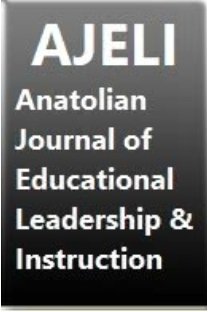Big Sibling Size And Access To Kabul University
Öz Purpose - A number of researches have been carried out in the past studying relationship between family size and its impact on educational achievements that have shown contradictory results . No published study has been found about the student’s sibling size and access to universities in Afghanistan. This study aims to estimate the average sibling size and sibship composition in students at Kabul University, and compare it with the national average sibling size. Methodology - A cross sectional descriptive study with simple and short questionnaire was designed to include all students of 2nd to 5th year students of Kabul university (N=11447) that is the oldest and most populous university in Afghanistan comprising different spectra of the community. Only descriptive statistics were used. Findings - The average sibling size was about 7.09, students from families with one to three siblings consisted only 5.8 % of all students. Male students belonged to families with more male siblings and female students belonged to families with more female siblings than their opposite gender. The average students ’sibling size was close to the national average of sibling size of approximately the same age group (6.9). Significance - Although it was a descriptive study, it shows that large sibling size did not prevent thousands students attaining Kabul University; which contradicts the belief that large sibling size is a barrier to education.
Anahtar Kelimeler:
Sibling Size, Access To Education, University, Gender Composition
___
1- Butcher, Kristin and Case, Anne, (1994), The Effect of Sibling Sex Composition on Women's Education and Earnings, The Quarterly Journal of Economics, 109, issue 3, p. 531-563.2- Chernichovsky D. “Socioeconomic and Demographic Aspects of School Enrollment and Attendance in Rural Botswana” Economic Development and Cultural Change. 1985;33:319–32.
3- Central Statistics Organization, Ministry Of Public Health and ICF.2017. Afghanistan Demographic and Heath Survey 2015. Kabul, Afghanistan. p 363.
4- Gomes M. “Family Size and Educational Attainment in Kenya” Population and Development Review. 1984;10:647–60.
5- Gülay Aslan. Metaphoric Analysis Regarding Gender Perceptions of Preservice Teachers .Education and Science. 2015; 181(40): 363-384
6- Guo G, VanWey LK. “Sibship Size and Intellectual Development: Is the Relationship Causal?” American Sociological Review. 1999b;64:169–87.avialable : http://users.cla.umn.edu/~uggen/guo_asr_99.pdf
7- Jæger.M.M. Does Sibship Size Affect Educational Attainment? A Re-evaluation of the Resource Dilution Hypothesis Using Instrumental Variables 6 WORKING PAPER. Research Database 2006. P2 . available : https://pure.sfi.dk/ws/files/287658/WP2006_05.pdf
8- Kalmijn, M., & van de Werfhorst, H. G. (2016). Sibship Size and Gendered Resource Dilution in Different Societal Contexts. PLoS ONE, 11(8), e0160953. http://doi.org/10.1371/journal.pone.0160953
9- Kaestner, Robert, (1997), Are Brothers Really Better? Sibling Sex Composition and Educational Achievement Revisited, Journal of Human Resources, 32, issue 2, p. 250-284.
10- Lam, D., & Marteleto, L. (2008). Stages of the Demographic Transition from a Child’s Perspective: Family Size, Cohort Size, and Children’s Resources. Population and Development Review, 34(2), 225–252. http://doi.org/10.1111/j.1728-4457.2008.00218.x
11- MARALANI, V. (2008). The Changing Relationship Between Family Size and Educational Attainment Over the Course of Socioeconomic Development: Evidence From Indonesia. Demography, 45(3), 693–717.
12- Marteleto, L. J., & de Souza, L. R. (2012). The Changing Impact of Family Size on Adolescents’ Schooling: Assessing the Exogenous Variation in Fertility Using Twins in Brazil. Demography, 49(4), 1453–1477. http://doi.org/10.1007/s13524-012-0118-813- Parpio Y et al .Factors associated with stress among adolescents in the city of Nawabshah, Pakistan. J Pak Med Assoc. 2012 Nov;62(11):1209-13. PMID: 23866413 http://jpma.org.pk/full_article_text.php?article_id=3805
14- Schmeer, K. K. (2009). Changing Sibship Size and Educational Progress During Childhood: Evidence From the Philippines. Journal of Marriage and the Family, 71(3), 787–801.http://doi.org/10.1111/j.1741-3737.2009.00633.x/ 15- V. Amin . Sibling Sex Composition and Educational Outcomes: A Review of Theory and Evidence for the UK. Labour 23(1):67-96 . 2009 .531–563
16- Wahi, M. M., Parks, D. V., Skeate, R. C., & Goldin, S. B. (2008). Reducing Errors from the Electronic Transcription of Data Collected on Paper Forms: A Research Data Case Study. Journal of the American Medical Informatics Association : JAMIA, 15(3), 386–389. http://doi.org/10.1197/jamia.M2381
- ISSN: 2148-2667
- Yayın Aralığı: Yılda 2 Sayı
- Başlangıç: 2013
- Yayıncı: Yeni Eğitim Yayıncılık
